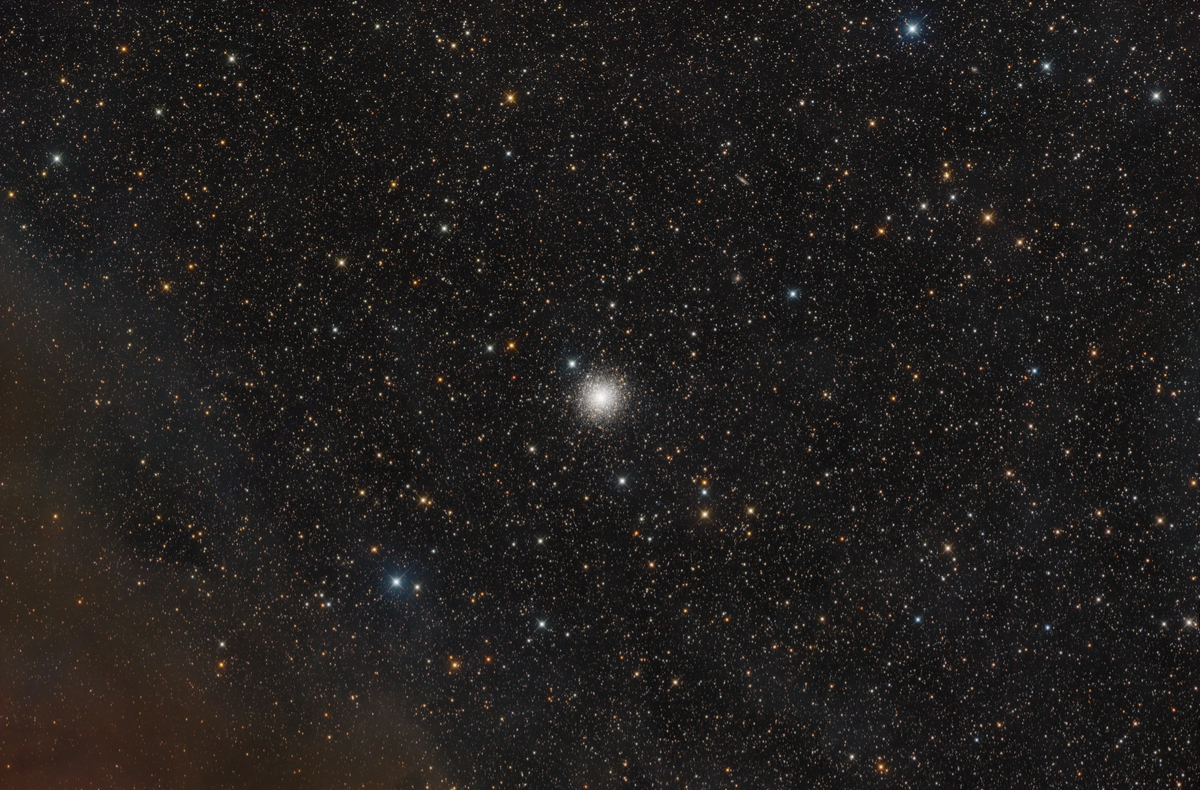
[back]
M 80
in Scorpius
[NED]
Big,
uncroped 100%
image version / Große, 100% Bild-Version (9363 x 6161
pixel, 0.743"/pixel)
Anotated Version (9363 x 6161
pixel, 0.743"/pixel)

|
(c) 2025 All astro photo images are copyrighted. They may not be used or reproduced without explicit written permission from the authors. |
|
300" |
|
About this Image / Über dieses Bild
| Camera: | Moravian C3-PRO-61000 Mono CMOS |
| Image Type, Orientation: | RGB Color Composite, North is at 12:00 |
| Exposure time: | RGB: 12/12/12 x 180s (1:48h total) |
| Exposure date: | May 31st, 2025 |
| Location: | Capella Observatory South at Kiripotib Astro Farm, Namibia |
| Filter: | Astronomik Deep-Sky Deep-Sky RGB Filter on Moravian EFW-3L-9-II External Filter Wheel |
| Instrument: | "Rhea", a PlaneWave DeltaRho 350, 1050mm focal length, 350mm aperture, f/3 on 10Micron GM2000 HPS II Combi |
| Photographer: | Rainer Raupach, Josef Pöpsel, Frank Sackenheim, Stefan Binnewies |
| Remarks: | Messier 80, located in the constellation Ophiuchus, is one of the most densely packed globular clusters known. Despite its remarkable age of approximately 13.5 billion years, it contains a significant population of blue stars known as blue stragglers. These stars are thought to form through collisions and mergers of older, lower-mass stars. Such stellar collisions are extremely rare in the universe—even during galactic mergers—but they become possible in environments with exceptionally high stellar densities. In the case of M80, the central density reaches 5.7 solar masses per cubic parsec, whereas in the solar neighborhood, the stellar density is only about 0.05 solar masses per cubic parsec. |
|
|
|
| Bemerkungen: |
Messier 80 im Sternbild Schlangenträger ist einer der dichtesten Kugelsternhaufen überhaupt. Trotz seines enormen Alters von ~13.5 Mrd. Jahren weist er einen hohen Anteil an blauen Sternen auf, sogenannte blaue Nachzügler. Diese sind vermutlich durch Kollisionen von älteren, kleineren Sternen entstanden. Derartige Zusammenstöße sind im Universum im allgemeinen äußerst unwahrscheinlich, selbst beim Verschmelzen von Galaxien. Bei den außerordentlich hohen Sterndichten in Kugelsternhaufen – M 80 weist im Zentrum eine Dichte von 5.7 Sonnenmassen pro Kubikparsec auf, während z.B. in der Sonnenumgebung nur etwa 0.05 Sonnenmassen pro Kubikparsec in Form von Sternen zu finden sind – ist dies jedoch möglich. |
Back to the Globular Clusters Overview / Zurück zur Kugelsternhaufen-Übersichtsseite